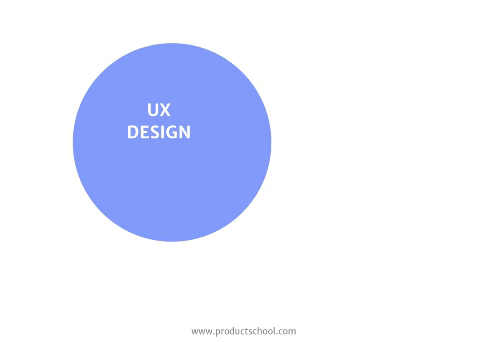Updated: May 6, 2024- 10 min read
It’s easy to confuse both. The truth is, a product perspective is important for PMing; but it’s not enough!
Well, how to start discussing Product Thinking vs Product Management? We keep arguing that Product Management is all about switching your viewpoint. Whether you compare it with other disciplines, such as Project Management, the first thing that comes to mind is a product’s relationship with a particular perspective in tech.

That is, PMing was made for the current Silicon Valley-led revolution. Why is that?
First, because digital applications today demand constant reinvention. Consumer needs evolve quickly; the product must be even quicker, advancing trends to reap the rewards of being there first.
Secondly, because digital teams require on-and-off interventions to protect a unified product vision. In traditional operations, it was OK to have discrete teams (Marketing, Design, Development) working on their own. This siloed mentality turned out to be the death knell for many early Internet stars. Hiring a Product Manager has become a cost-effective way of ensuring teams are aligned.
Finally, because users today are digital-first. Long gone are the days of arcane computer systems and complicated mechanics: success is as much about lower prices as it is about user knowledge. As cases like Netflix or Spotify show, even zero-cost piracy can be combated through effective design.
That said, Product Thinking is not all there is in Product Management. But it can be a stepping stone towards it.
Let’s learn why.
What Is Product Thinking?
Product Thinking is a vital principle in modern-day operations. Until relatively recently, Industrial Designers and other professionals used to have a pretty standard line of products. Within this line, the most important initiative was to add or subtract features, according to what the market seemed to demand at the time. Think of everyday objects like washing machines, fridges, and cars.
But the essential step in this process (thinking about the product) was actually quite rudimentary. It was usually function-oriented: what is that my customers want of me. Brands got used to doing the same over years, even decades.
Then, the digital economy and its software products greatly accelerated life-cycles. Now, designers coming from the old frameworks found it difficult to confront this reality. Indeed, some still are. It is really difficult to break from a way of approaching product design and development that just feels right.
But it’s not right.

Here are some mistaken assumptions involved in old design thinking:
The customer is always right.
If you have seen Mad Men, you will appreciate how the show’s main character, publicist Don Draper, is always challenging client needs and expectations. But this is an utterly modern sensibility. In truth, for most of previous century corporations resorted to the standard customer knowledge playbook (surveys, focus groups, and testing) without deviating much from their operating principles. You can do well. But it is not enough to achieve excellence.
Respect tradition.
The big brands of the twentieth century were universally respected. In the decades after the Second World War, the sphere of commercial options expanded dramatically. House appliances, transportation, entertainment… innovations became staple items of contemporary human life.
It’s all about features.
Traditional product design thinks about functionalities first; needs second. It used to be the case that the technological race was all about offering more options to the consumer. But what if this increased complexity is not coherent? What if its interface resembles that of an alien mothership’s computer? Features, functionalities, applications; they are not the alpha and omega of design and development.
The journey? What’s that?
Yes, another issue that many traditional companies used to forget about. Remember the first “personal computers”? Well, the only “persons” who could really approach them were technical masters. But, the more we approached the current century, the better-recognized user journeys were.
Today, digital companies are obsessed with achieving the smoothest journey through their services, to guarantee customer capture and retention.
The more, the better.
Think about kitchen appliances: there are so many little tasks to be done preparing a meal. Why not have them all concentrated in one gizmo? Well, it turns out, this type of machine is only really demanded by a select group of consumers. By adding more usability to a product, you are not necessarily making it more attractive. Think of Apple’s approach: yes, its phones often have fewer functionalities than those of the competition; but they are still market leaders.
Now that you know the drawbacks of traditional design perspectives, you understand what it takes to embrace Product Thinking in full. There are several ways it differs from traditional design.

First, forget the legacy. While many tech companies were built from scratch, several large corporations have moved into the digital sphere fairly recently. The first step they have had to do to become successful? Leave aside the kind of considerations listed above. Start defining your design principles tabula rasa: from zero.
If the biggest successes of the last decade (Facebook or Spotify) had replicated their competition (MySpace or Napster); they would have failed. But now these Silicon Valley successes are becoming the new “traditional” institutions everyone wants to imitate. Wrong! Develop your principles and your approach from different sources. Be irreverent; they achieved that, so what: you can do even more! And, above all, PMs are not afraid to challenge industry preconceptions.

Secondly, customers are key, but not in the way you think. Contemporary design is still concerned with function but cares a lot more about form. The nature of the digital economy makes it so. You think that Twitter was the first microblogging platform? Or that Amazon began as the only digital book retailer? You are wrong! For sure, any customer survey would have told you that the Internet was demanding similar services.
However, it is also likely that user voice at the time would have demanded legacy functionalities; not the type of innovations that lead to market capture. What these companies mastered was the art of adding something else: an option the customer could not even know they wanted. Character limits and hashtags in the case of Twitter; a universal marketplace in the case of Amazon. Thus, Product Thinking involves techniques like Jobs-To-Be-Done, which focuses on the actual use customers make of your product; not the gap they or your user research papers claim that your features are filling in the market.
Finally, the world is complicated: make life simple! Most product successes do one single thing really well. Yes, tech giants are aiming to capture as many slices of the market as possible. But, if you look closely, many times they are simply acquiring projects that began as singular solutions to a particular problem.
So, as with the kitchen example above, good PMs avoid that their product becomes a one-stop-shop that is too big. Rather, focus on one need that you can deliver really well: whether it’s securing international transactions; providing information about health insurance; or distributing video game streamings.
These, and the bravery to disrupt established conceptions (it cannot be stressed enough!), are the key traits that characterize contemporary product thinking.
However, is this enough to jump into product? Not really.

Crossing the Bridge: Product Management
Product Thinking is the elementary beginning for any Product Manager. However, it is not everything. Many User Experience professionals have been seduced by the terminology; believing they have managed the transition to PMs by simply embracing its mentality.
But there is much more; it is not enough with Product Thinking to become a full-spectrum product person.

A Product Manager is familiar with design, sure. But its position is much wider than that. Developing a product vision is a very expansionary project. Factors such as commercial interests, stakeholder negotiation, timelines, competition initiatives… They all contribute to make the PM job a little bit more complicated than “thinking about product”. Conclusions generated by product thinking can be challenged by other factors down the chain: keep reading to understand what we mean.
A Product Manager has business acumen. PMs know what is going on in the tech sphere. From conferences to specialized publications, they are expected to have a finger on the present and the future of product. This also reflects the “commercial” skills these professionals are supposed to have. Price points, user functions, customer relationship management, distribution networks… PMs are not supposed to know each of them specifically, but to have sufficient grasp in order to make strategic decisions (this includes data proficiency!).
A Product Manager relies on stakeholders. Remember, they are not CEOs! But product people rely on teams beyond their immediate colleagues to gather information about the product development and distribution process. We are not just talking to internal stakeholders here: customers, intermediaries and other affected sectors (think public transport operators, in the case of Uber) must be taken into account. Product Thinking does not cover these aspects.

A Product Manager has industry knowledge. Usually, Product Management transition stories have a “horizontal” narrative. The person in question moved within the industry to occupy a product role. This is because, whatever PMs are taking care of, it is very important that they know the sector’s main trends. Whether it’s fintech or data apps, these professionals immerse themselves into the dynamics of particular users and particular tasks. True, their soft skills are transferable; but, many times, their hard knowledge remains tied to a sector even after several decades.
A Product Manager speaks the language of engineers. Dealing with technical teams can be the nightmare of novice PMs who emerge from marketing, sales and other related disciplines. These experts often lack sufficient knowledge about the technical limitations or possibilities of taking one path or another. However, with time, it is expected that all PMs gain enough confidence and earn the trust of these vital company stakeholders. This is why many choose to pursue professional product certifications which may include data analytics, coding or blockchain courses before they attain senior product positions.
A Product Manager develops its own vision. This is hugely important. For many, it also sets the difference between PMs and the other huge PM constituency; Project Managers. Product people are not necessarily supposed to enthrall an entire audience with their public appearances. But, after a while, their own experiences take the form of a signature: a distinguished approach to problem-solving, design and marketing that pertains to this PM alone. This is something “product thinking” does not include per se.
All in all, Product Thinking is a necessary but not sufficient condition to call yourself a Product Manager. This discipline involves much more.

The User Experience Cool Kids
A long time ago, we defined Product Managers as the User Experience Cool Kids. And it is still very much the case. Product Thinking, wherever and whenever applied, is not the end but the beginning of a career in product.
Highlights of this perspective include: developing an independent mindset about customer desires; giving equal weight to form as well as function; and being ready to discard legacy ways of doing things. While some UXs hold all of these traits, Product Management requires crossing a bridge with more complex requirements.
We have shared in the past some articles on making the move from Design to Product Management. Check them out for more practical examples on the differences between Product Thinking and Product Management! What is your understanding of Product Thinking? How does it relate to Product Management?
Updated: May 6, 2024





